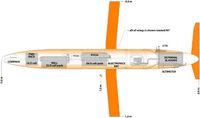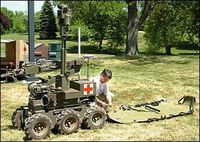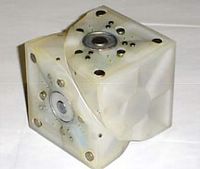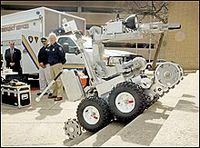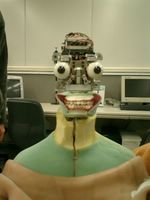Robotic Worm For Colonoscopy
By Karen Epper Hoffman May 30, 2005
"Engineering is starting to take inspiration from biology as we come across challenges that machines can't solve," Mangan says.
.. the Case Western work typifies a shift in robotics, where more engineers will copy biological systems to create "anthropomorphic robots" made of softer and lighter materials that operate like a living creature.
With that in mind, Case Western graduate student in mechanical engineering Liz Mangan had a challenging task in building the robotic device that Chiel and his colleagues Roger Quinn, director of the university’s Biorobotics Laboratory, and Randy Beer, professor of electrical engineering and computer science, designed in 2000.
A team of researchers at Case Western Reserve University have created a robotic device that moves much like a slug or earthworm -- and it could ultimately become the ideal tool to help doctors perform colonoscopies.
Building on several years of work studying the movements and behavior of soft-tissue animals, Chiel's team has constructed an endoscopic device made up of three muscle-like latex actuators -- mechanisms that help the robot move in its environment -- covered in nylon mesh. The device resembles a nine-inch hollow worm with a small camera inside it. Right now, it's about a half-inch wide, but the team hopes to miniaturize it down to no more than 20 millimeters in diameter.
By inflating and contracting the mechanism, using a self-managing movable seal system that the researchers had to create, the actuator segments move the robotic "worm" forward -- the same way its biological counterpart scrunches its body to propel itself. Doctors will use a joystick, initially connected by wire to the device, to control the direction in which it travels, says Chiel.
Learning to Crawl
Maybe use a bug instead of a worm.
Link to SnakeBot Gallery

